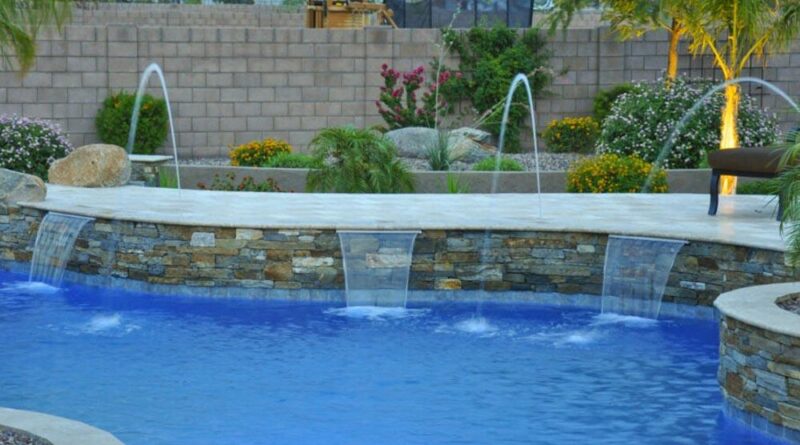The Ultimate Guide to Pool Maintenance: Keeping Your Pool Sparkling Clean
A well-maintained pool is more than just a luxury; it’s a source of relaxation, recreation, and health. But to keep your swimming pool clean, safe, and in excellent condition, consistent Pool Maintenance is essential. If neglected, pools can quickly become breeding grounds for bacteria, algae, and other harmful substances. Whether you have a small backyard pool or a larger community pool, regular upkeep will help extend the life of your pool and enhance your swimming experience.
This guide provides comprehensive pool maintenance tips, covering everything from daily tasks to seasonal upkeep.
1. Understanding the Basics of Pool Maintenance
Maintaining a pool may seem overwhelming at first, but breaking it down into a few simple areas makes the task manageable. The key components of pool maintenance include:
-
Water circulation
-
Filtration
-
Cleaning
-
Water chemistry
Each of these components plays an integral role in keeping your pool water clear and healthy.
2. Daily Pool Maintenance Tasks
Your pool requires daily attention, especially during peak swimming season. Here are some quick daily tasks to ensure your pool stays in optimal condition:
-
Skim the Surface: Using a skimmer net, remove leaves, bugs, and other debris from the surface of the pool. This prevents the filter from becoming clogged and makes the water more appealing for swimming.
-
Check the Water Level: Ensure the water level is not too high or too low. It should sit at the mid-point of your skimmer to allow the filtration system to function correctly.
-
Inspect the Pool Area: Check the surrounding pool deck and equipment for any signs of wear, leaks, or malfunction.
3. Weekly Pool Maintenance Routine
Weekly maintenance is essential to keep the water balanced and the pool free from algae and bacteria.
3.1 Test the Water Chemistry
One of the most critical aspects of pool maintenance is balancing the pool water chemistry. You’ll need to check and adjust the following chemical levels:
-
pH level: Ideal pH levels range from 7.4 to 7.6. If the pH is too high or low, it can lead to skin irritation, and cause corrosion or scaling on the pool surfaces and equipment.
-
Chlorine levels: Chlorine is crucial for sanitizing the pool. Maintain chlorine levels between 1 and 3 ppm (parts per million).
-
Alkalinity: The total alkalinity should be between 80 and 120 ppm. Alkalinity helps stabilize pH fluctuations.
-
Calcium hardness: Aim for calcium hardness levels between 200 and 400 ppm. Too much or too little calcium can damage the pool’s surface.
-
Cyanuric Acid: This acts as a stabilizer for chlorine, especially in outdoor pools. Levels should be between 30 and 50 ppm.
Use a pool testing kit or strips to monitor these levels. Regular testing ensures the water stays clean and safe for swimmers.
3.2 Brush and Vacuum the Pool
-
Brush Pool Walls and Floor: Algae and debris can cling to pool surfaces. Use a pool brush to scrub the walls, floors, and steps. Pay particular attention to corners and crevices.
-
Vacuum the Pool: For debris that has sunk to the bottom, use a manual or automatic pool vacuum. Vacuuming once a week keeps the pool floor free of dirt and reduces strain on your filter.
4. Monthly Pool Maintenance Checklist
On top of daily and weekly tasks, you should also take time each month to perform a few deeper cleaning and inspection tasks.
4.1 Shock the Pool
Even with regular chlorine use, bacteria and algae can still grow in your pool water. Shocking the pool (also known as superchlorination) involves adding a large dose of chlorine to the water to kill off any lingering contaminants. This should be done every month or after heavy pool use.
4.2 Inspect Pool Equipment
-
Check the Pump and Filter: Inspect the pump and filter system for any wear or damage. A well-functioning pump ensures that your water circulates correctly, and the filter removes contaminants effectively.
-
Clean the Filter: Filters should be cleaned monthly (or as often as necessary). There are three main types of filters: sand, cartridge, and diatomaceous earth (DE). Each requires different cleaning methods, but all play a crucial role in maintaining water quality.
4.3 Algaecide Treatment
To prevent algae growth, consider adding an algaecide to your pool water. Algaecides are chemicals that inhibit the growth of various types of algae, ensuring that your pool stays clear and inviting.
5. Seasonal Pool Maintenance
As the seasons change, so do your pool maintenance needs. Depending on whether you live in a year-round warm climate or experience cooler seasons, your pool care routine will shift accordingly.
5.1 Opening the Pool for Summer
If you closed your pool for the winter, proper preparation is required before opening it for the summer:
-
Remove the Cover: Clean and remove the pool cover. Make sure to dry it out before storing it to prevent mold and mildew.
-
Refill and Test Water Levels: Top off the pool water to the proper level and test the chemical balance.
-
Inspect and Clean Equipment: Ensure that all pool equipment, including pumps, filters, heaters, and lighting, are in working order before you start swimming.
5.2 Winterizing the Pool
If you live in a climate where temperatures drop significantly, winterizing your pool will protect it from damage:
-
Balance the Water: Before closing your pool, ensure the water is properly balanced. Adjust pH, alkalinity, and calcium levels to prevent scaling or corrosion.
-
Lower the Water Level: Drain the water below the skimmer level to prevent freezing and potential damage.
-
Clean and Store Equipment: Remove, clean, and store all pool accessories such as ladders, diving boards, and floatation devices.
-
Cover the Pool: Use a high-quality pool cover to protect the water from debris and harsh weather conditions.
6. Troubleshooting Common Pool Issues
Even with diligent care, problems can arise. Here are some common pool issues and how to fix them:
6.1 Cloudy Water
Cloudy water can result from improper chemical balance, poor filtration, or inadequate circulation. To fix cloudy water:
-
Test and adjust chemical levels, especially pH and chlorine.
-
Run the pool pump for an extended period to improve circulation.
-
Clean or backwash the filter to remove any blockages.
6.2 Algae Growth
Algae can turn your pool green or black and make the surface slippery. To eliminate algae:
-
Brush the affected areas.
-
Shock the pool to kill algae spores.
-
Run the filter continuously until the water clears, then vacuum the pool to remove dead algae.
6.3 Low Water Level
A dropping water level may indicate a leak or simply result from evaporation. If it continues to drop despite topping it off, check for leaks in the liner, plumbing, or pool equipment.
7. Hiring a Professional Pool Service
While many pool maintenance tasks are manageable with the right tools and knowledge, some situations may require professional assistance. Consider hiring a pool service for:
-
Regular chemical balancing and testing.
-
Equipment repair or replacement.
-
Thorough cleaning and maintenance during peak seasons.
-
Opening and closing the pool each season.
A professional service can save you time and ensure your pool is maintained to the highest standards.
Conclusion
Proper pool maintenance requires regular effort, but the rewards of a clean, clear, and safe swimming environment are well worth it. By following this guide, you’ll ensure your pool remains an oasis of fun and relaxation for years to come. Happy swimming



